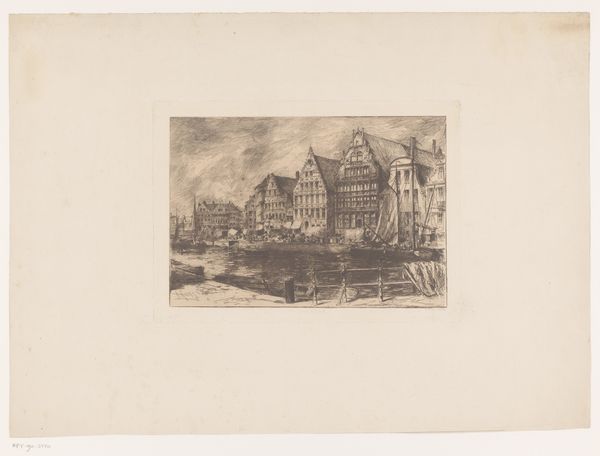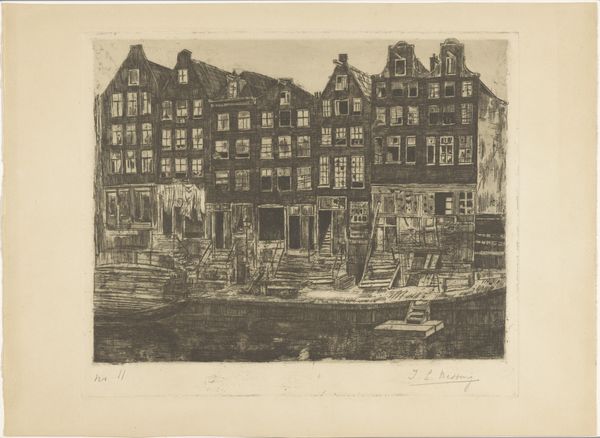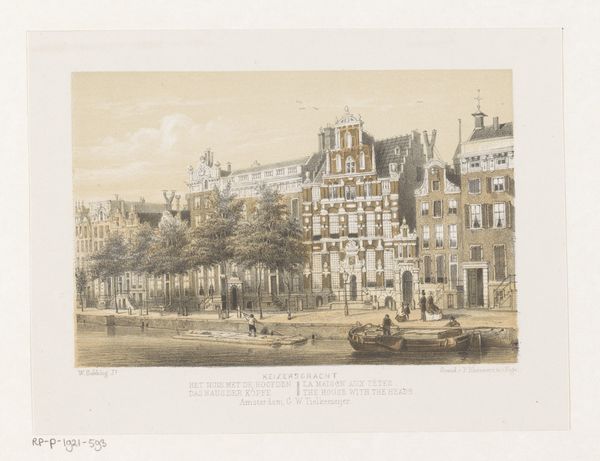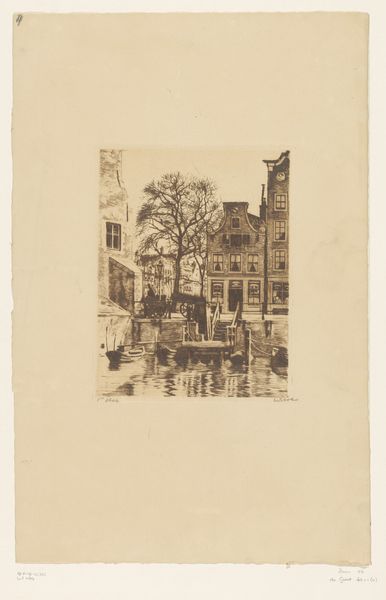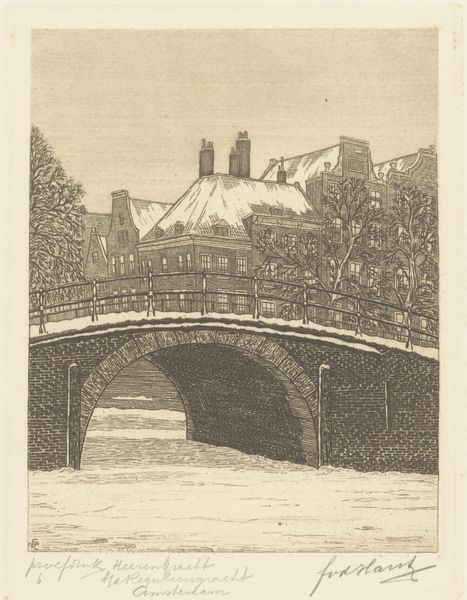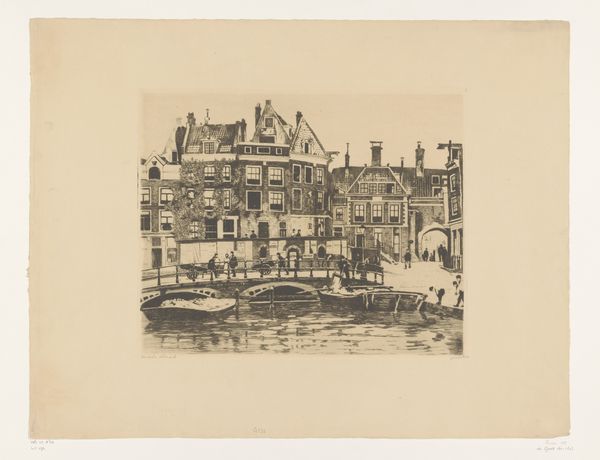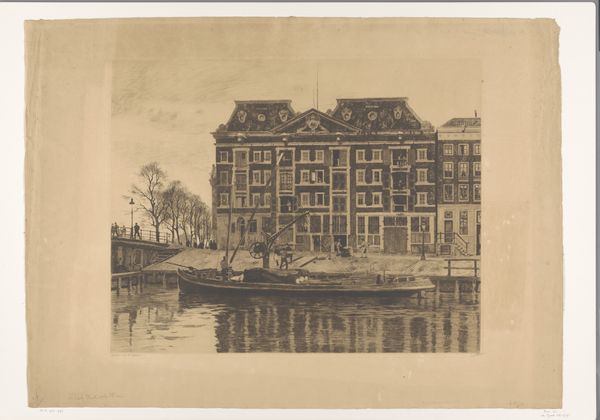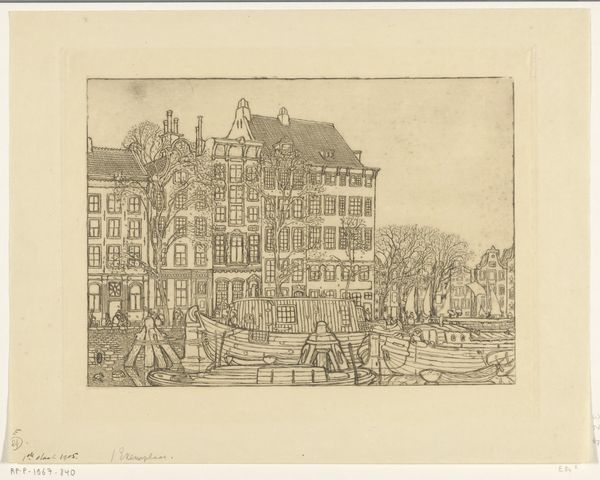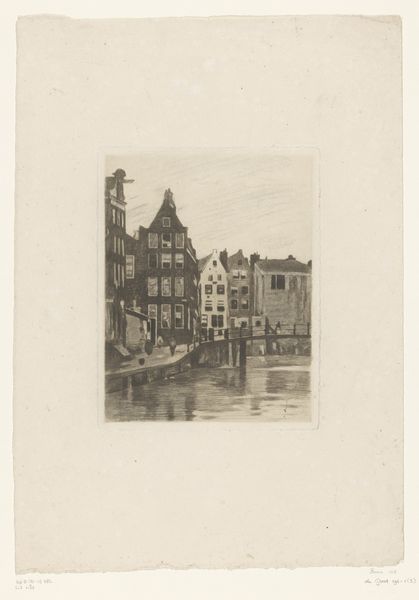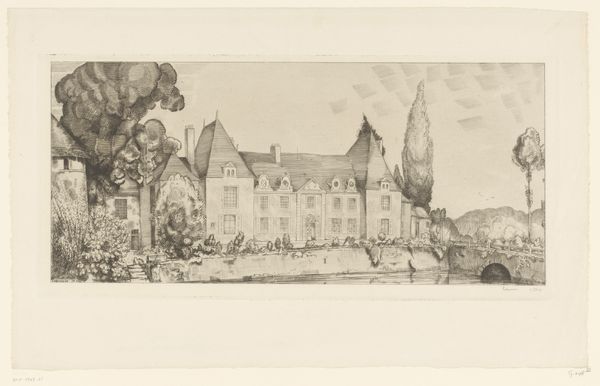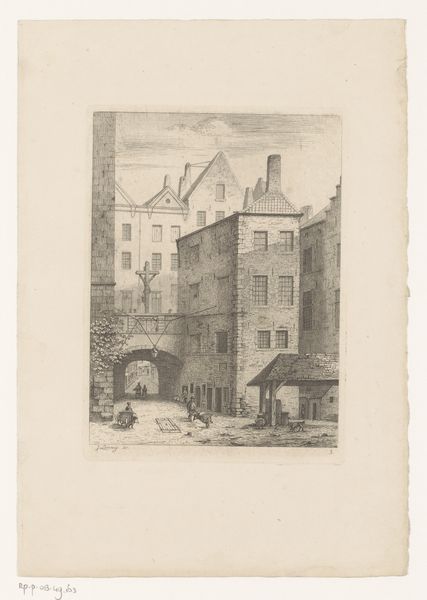
drawing, print, engraving
#
pencil drawn
#
drawing
# print
#
old engraving style
#
landscape
#
geometric
#
line
#
cityscape
#
engraving
#
realism
Dimensions: height 585 mm, width 501 mm
Copyright: Rijks Museum: Open Domain
Editor: This is "Pakhuizen aan de Brouwersgracht te Amsterdam," a drawing or print by William Degouve de Nuncques, around 1917. It depicts warehouses, barrels, water, and so many birds! I find the precise, almost repetitive depiction of the buildings quite striking, but the birds introduce a chaotic energy. What symbolic weight might these features carry? Curator: The artist juxtaposes architectural geometry with organic fluidity. Consider the buildings: rectangular, ordered. What feelings arise when you see such structured repetition? It reflects order, yes, but possibly also the constraints of urban life and commerce, an unyielding societal grid. Editor: That makes sense, it does feel a bit stifling. So what about the birds, then? Curator: The birds, in contrast, embody freedom, escape. Throughout history, birds often symbolize the soul, transcendence, or messages between worlds. The flock might suggest release from the earthly constraints of the city, a collective yearning for something beyond the tangible. Is this yearning for individual freedom, a desire for transformation, or perhaps just a search for sustenance? Editor: That's interesting. I was thinking the birds simply brought movement to an otherwise static scene. Curator: Movement, certainly, but artists rarely introduce elements solely for aesthetic purposes. Each form carries meaning, built up through centuries of visual language. Do the birds challenge or complement the industrial architecture? Do they highlight the tension, or hint at a resolution? Editor: I guess they do both. The birds point out the rigidity of the warehouses, but their sheer number almost overwhelms the buildings, like they’re reclaiming the space. It gives the work an underlying optimism, I think. Curator: Precisely. Even the mundane carries latent psychological and cultural significance when viewed through the eyes of the artist and the traditions they evoke. Editor: I'll definitely pay more attention to the history and context within seemingly simple artistic choices.
Comments
No comments
Be the first to comment and join the conversation on the ultimate creative platform.
